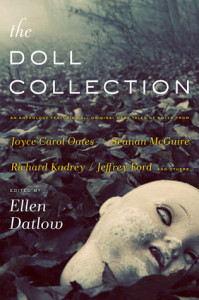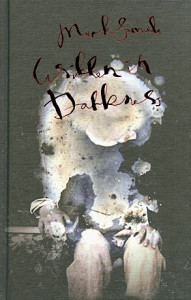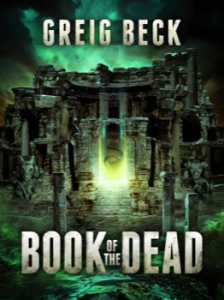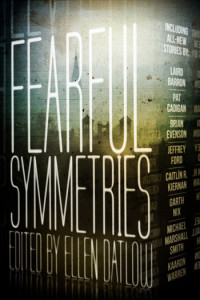The Doll Collection
Edited by Ellen Datlow
Tor Books, 2015
Reviewed by Mario Guslandi
Well known, distinguished American editor Ellen Datlow continues to delight horror fans with juicy anthologies of excellent short fiction featuring either reprints or, as in this case, brand new, original tales.
“The Doll Collection” is a theme anthology assembling seventeen stories where dolls (of any size, type and nature) represent the backbone of the plot. Needless to say the average quality of the material is extremely good, with about 50%of the stories reaching a level of excellence which makes them worth to be included in any forthcoming “Year’s Best”. A challenge for Datlow herself, as the editor of one of the most important and successful “Best Horror of the Year” series.
Then please take note of the following titles and see if my prediction is well founded or not.
“Skin and Bone” by Tim Lebbon is a masterful tale of Arctic horror where the discovery of two doll- like corpses in the snow reveals the hidden truth about the fate of the expedition, while “Heroes and Villains” by Stephen Gallagher is a creepy yarn featuring a too lively ventriloquist’s dummy recalling a past tragedy brought about by a fire.
In the enigmatic tale of witchcraft, “Gaze” by Gemma Files, we get acquainted with a long dead woman with eyes of different colours and in the terrifying “Ambitious Boys Like You” by Richard Kadrey, two young burglars breaking into an old man’s house end up facing a veritable nightmare.
Stephen Graham Jones contributes the offbeat but fascinating and disquieting “Daniel’s Theory About Dolls”, probing the dark secrets of a family where two brothers, living with the constant memory of an unborn little sister, have an unhealthy obsession with dolls.
Genevieve Valentine’s delicious “Visit Lovely Cornwall on the Western Railway Line” depicts with a gentle, exquisite touch the train journey of a girl travelling alone.
Lucy Sussex provides the very enjoyable “Miss Sibyl-Cassandra”, revolving around a fortune-telling doll and her ambiguous but effective previsions.
John Langan exhibits his great storytelling ability in “Homemade Monsters” where childhood memories about the disappearance of a kid during an unusual seismic event are linked to a makeshift but powerful Godzilla figurine.
Other contributors are: Joyce Carol Oates, Pat Cadigan,Seanan McGuire, Carrie Vaughn, Miranda Siemienowicz, Mary Robinette Kowal, Richard Bowes,Veronica Schanoes and Jeffrey Ford.
Needless to add, a highly recommended book.
- review by Mario Guslandi
.





